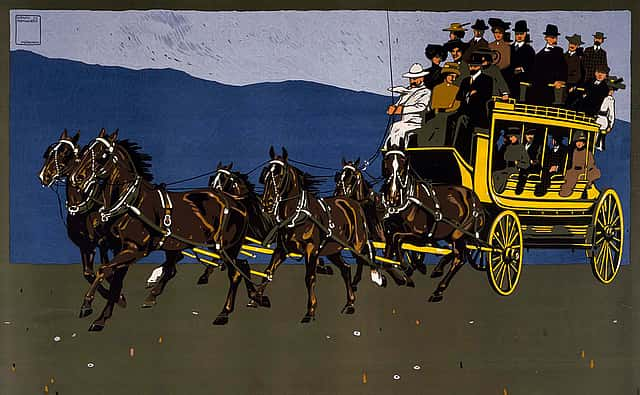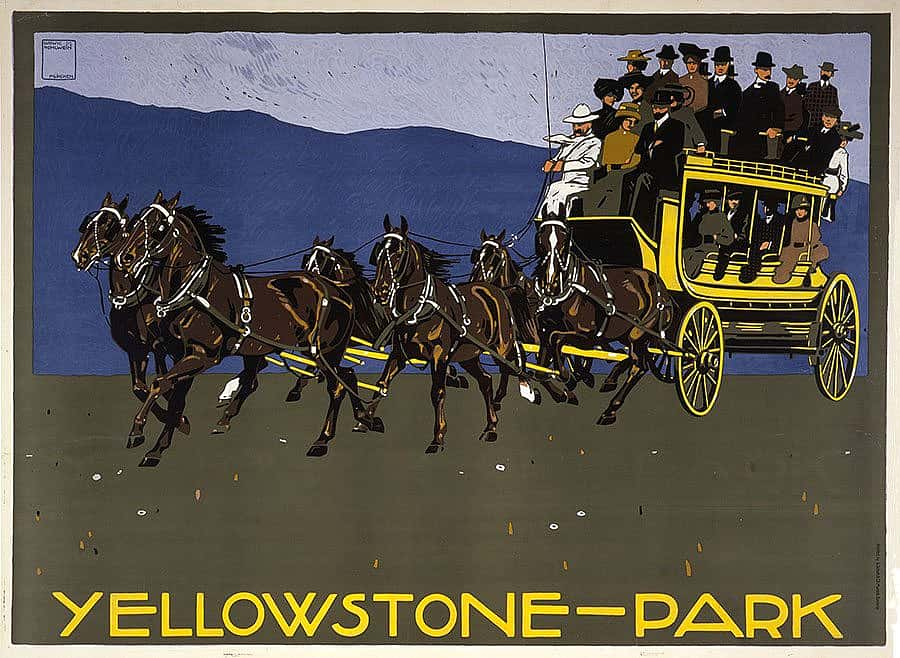
From Cody to Canyon – Points West Online
Adapted from an article originally published in Points West magazine in Summer 1997
From Cody to Canyon
By Frances B. Clymer
Former Librarian, McCracken Research Library
Ed. note: Yellowstone National Park marked its 125th anniversary in 1997, the year the original of this article appeared in Points West. For the occasion, the McCracken Research Library featured an exhibition titled Cody to Canyon: Yesterday and Today. It examined travel over the road from Cody to Canyon Village in Yellowstone and the many modes of transportation used by travelers along this road over the years. The following historical information was part of the exhibition.

When Cody’s founder, William F. Cody, traveled from Cody to the eastern border of the Park in 1895, he found what he felt to be a passable route over Sylvan Pass into Yellowstone. Cody was certain that if visitors to Yellowstone could enter the Park from the east the town of Cody would benefit. With the help of others, he rallied considerable support for his cause and in 1901 a spur of the Chicago, Burlington and Quincy Railroad to Cody was completed, making the town more accessible to travelers. Trains transported supplies, shipped farmers’ crops and brought passengers on their way to Yellowstone Park.
By 1903 a road from Cody to Yellowstone along the North Fork of the Shoshone River was officially open for traffic. Travelers were able to make the trip from Cody to the Grand Canyon of the Yellowstone without experiencing major difficulties.
The first Cody Road tourists were conveyed to the Park in horse-drawn coaches. Independent travelers (or “sagebrush tourists”) made the trip in wagons or on horseback. After 1911 tourists were transported in large, motorized touring vehicles and a bit later in buses.
Since automobiles were not permitted in the Park until 1915, early tourists were met at the East Entrance by coaches such as the magnificently conserved Yellowstone National Park Transportation Company coach, which was the centerpiece of the 1997 exhibition. Traffic through the East Entrance to the Park doubled the year that automobile travel was sanctioned, and a new era in Yellowstone travel began.
Post 130
Written By
Nancy McClure
Nancy now does Grants & Foundations Relations for the Center of the West's Development Department, but was formerly the Content Producer for the Center's Public Relations Department, where her work included writing and updating website content, publicizing events, copy editing, working with images, and producing the e-newsletter Western Wire. Her current job is seeking and applying for funding from government grants and private foundations. In her spare time, Nancy enjoys photography, reading, flower gardening, and playing the flute.

